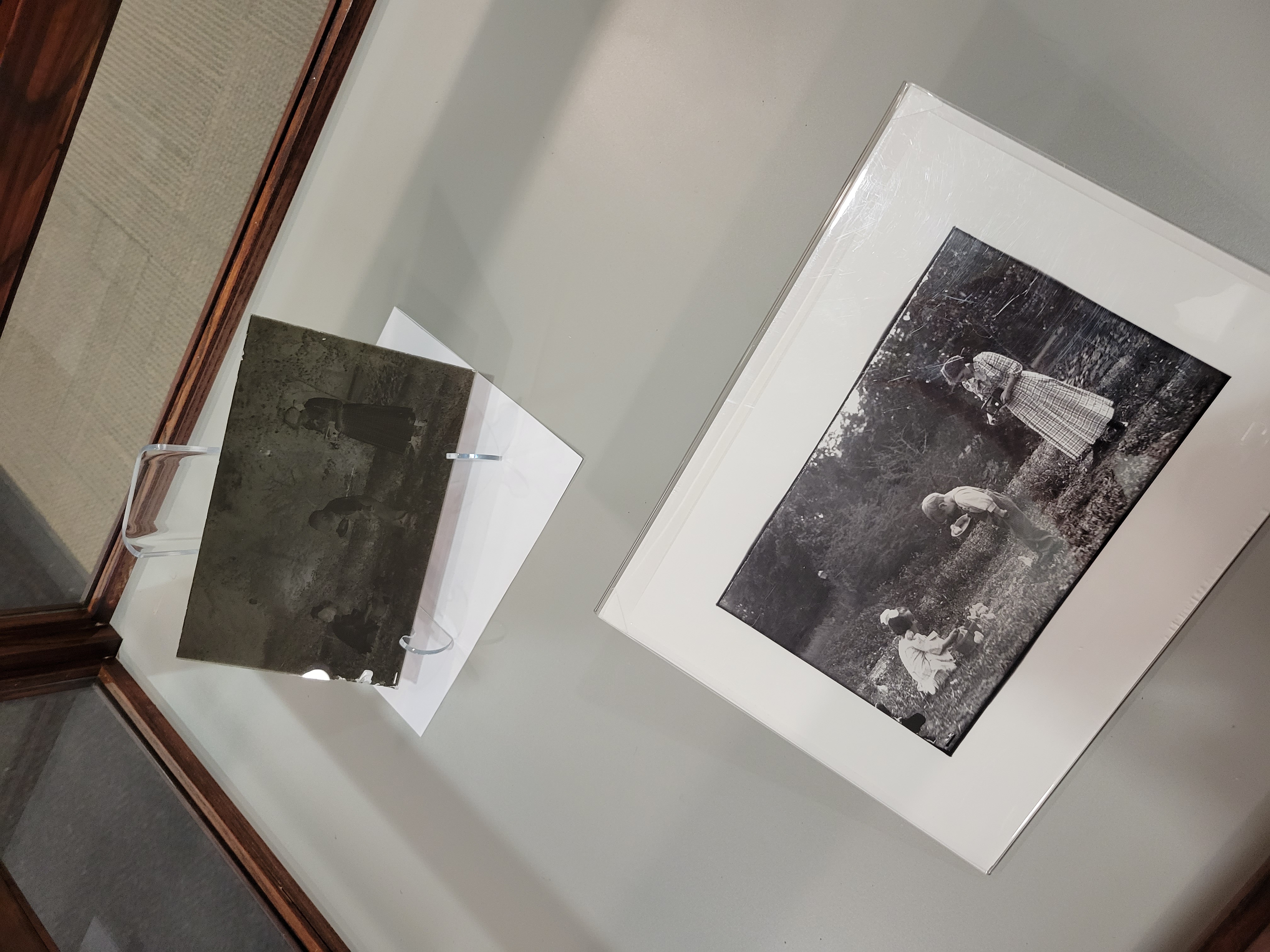
A glass plate negative photograph is created by spreading emulsion on a glass plate. Light is focused through a lens onto that material creating the negative image which is then developed to create the photograph. This photography method was invented in 1851 but required photographers to expose and develop the photo before the emulsion dried. Dry plate negatives were an important development, first made available in 1873, and allowing photographers to take multiple plates out for exposure and process them all later. This method of photography was popular from the 1880s to the late 1920s as it was more convenient and efficient. The invention of roll film made cameras and photography more accessible and manageable, and glass plate negative photography went out of style. One user of the dry plate negative photography in Alfred was Henry C. Hunting. He owned a photography studio from the early 1900s to the 1920s. His camera, photos, negatives, and signature stamp are all held in the collection.
